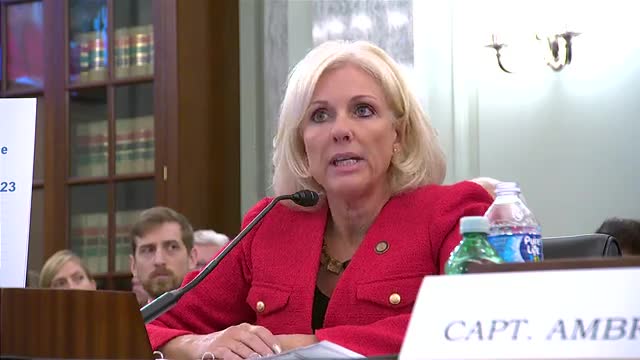Aviation safety at risk as controller shortages escalate
November 10, 2023 | Commerce, Science, and Transportation: Senate Committee, Standing Committees - House & Senate, Congressional Hearings Compilation
This article was created by AI summarizing key points discussed. AI makes mistakes, so for full details and context, please refer to the video of the full meeting. Please report any errors so we can fix them. Report an error »

In a recent government meeting, officials from the National Transportation Safety Board (NTSB) and the Federal Aviation Administration (FAA) addressed growing concerns regarding aviation safety amid a resurgence in air traffic. NTSB Chair Jennifer Homendy emphasized the urgent need for increased resources to tackle significant safety challenges, citing a troubling trend of near misses and incidents that threaten public confidence in the aviation system.
Homendy recalled previous warnings issued after critical incidents, including a near-collision at San Francisco International Airport in 2017, which highlighted the risks posed by current air traffic control (ATC) shortages. She noted that the aviation industry is grappling with a new workforce that requires extensive training and mentorship, compounded by issues of fatigue and mental health challenges among staff. The NTSB is advocating for a budget of $145 million for fiscal year 2024 to enhance safety measures and support its mission.
FAA Chief Operating Officer Tim Murrell echoed these sentiments, stressing that while the U.S. aviation system remains the safest globally, continuous improvement is essential. He reported that in fiscal year 2023, there were over 54 million takeoffs and landings, with 1,756 runway incursions, underscoring the need for vigilance and proactive safety measures. Murrell highlighted the importance of collaboration and transparency in addressing safety concerns, noting that the FAA is committed to eliminating significant safety events.
Rich Santa, President of the National Air Traffic Controller Association, called for Congress to pass a comprehensive FAA reauthorization bill that includes updated staffing targets to address the current shortage of air traffic controllers. He warned that the existing model for staffing has led to increased mandatory overtime and fatigue among controllers, which poses additional risks to air traffic operations.
The meeting underscored a collective call for action to enhance aviation safety through improved funding, staffing, and technology, as officials work to ensure the continued safety of the flying public.
Homendy recalled previous warnings issued after critical incidents, including a near-collision at San Francisco International Airport in 2017, which highlighted the risks posed by current air traffic control (ATC) shortages. She noted that the aviation industry is grappling with a new workforce that requires extensive training and mentorship, compounded by issues of fatigue and mental health challenges among staff. The NTSB is advocating for a budget of $145 million for fiscal year 2024 to enhance safety measures and support its mission.
FAA Chief Operating Officer Tim Murrell echoed these sentiments, stressing that while the U.S. aviation system remains the safest globally, continuous improvement is essential. He reported that in fiscal year 2023, there were over 54 million takeoffs and landings, with 1,756 runway incursions, underscoring the need for vigilance and proactive safety measures. Murrell highlighted the importance of collaboration and transparency in addressing safety concerns, noting that the FAA is committed to eliminating significant safety events.
Rich Santa, President of the National Air Traffic Controller Association, called for Congress to pass a comprehensive FAA reauthorization bill that includes updated staffing targets to address the current shortage of air traffic controllers. He warned that the existing model for staffing has led to increased mandatory overtime and fatigue among controllers, which poses additional risks to air traffic operations.
The meeting underscored a collective call for action to enhance aviation safety through improved funding, staffing, and technology, as officials work to ensure the continued safety of the flying public.
View the Full Meeting & All Its Details
This article offers just a summary. Unlock complete video, transcripts, and insights as a Founder Member.
✓
Watch full, unedited meeting videos
✓
Search every word spoken in unlimited transcripts
✓
AI summaries & real-time alerts (all government levels)
✓
Permanent access to expanding government content
30-day money-back guarantee
